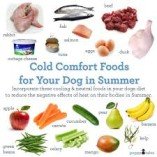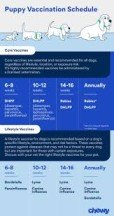Dog Hydration Tips for Summer: Keep Your Pet Cool and Healthy
When the sun is blazing and temperatures soar, our dogs are at increased risk of dehydration and heat-related illnesses. Hydration is not just about water—it’s about ensuring your dog receives the right balance of fluids, electrolytes, and diet to stay cool and energetic. This article offers essential dog hydration tips for summer to help keep your furry friend safe, refreshed, and healthy during the hottest months.
Why Hydration Matters in Summer
Dogs do not sweat like humans. They regulate body temperature primarily through panting and limited sweat glands on their paws. In hot weather, they can quickly lose moisture through respiration and increased activity, which can lead to dehydration, overheating, and even heatstroke.
Signs of dehydration in dogs include:
- Dry nose and gums
- Lethargy or weakness
- Sunken eyes
- Excessive panting
- Loss of skin elasticity
- Dark urine or reduced urination
Preventing dehydration is far easier (and safer) than treating it. These dog hydration tips for summer will help you proactively support your pet’s health.
1. Always Provide Fresh, Cool Water
The most obvious tip—but the most important. Your dog should always have access to clean, cool water, whether at home or on walks.
Tips:
- Change water frequently (at least twice a day)
- Place multiple water bowls around the house and yard
- Use stainless steel or ceramic bowls (they stay cooler than plastic)
- Keep bowls in shaded areas outdoors
If your dog is active or spends time outside, they may need up to twice their usual water intake during hot weather.
2. Encourage Hydration with Flavor
Some dogs aren’t naturally enthusiastic drinkers. You can encourage more water intake by making it more appealing.
Try adding:
- A splash of low-sodium chicken or beef broth
- A few ice cubes made from diluted bone broth
- A slice of cucumber or apple for taste and fun
Make sure added ingredients are dog-safe and low in sodium.
3. Offer Hydrating Foods
One of the best dog hydration tips for summer is to include moisture-rich foods in your dog’s diet.
Best hydrating options:
- Cucumber (95% water)
- Watermelon (seedless, in moderation)
- Zucchini
- Blueberries
- Carrots
- Canned pumpkin (unsweetened)
Switching from dry kibble to wet or homemade food can also increase overall hydration.
4. Serve Frozen Treats and Ice Cubes
Frozen dog-friendly snacks help your dog cool down while boosting their fluid intake.
Ideas:
- Frozen yogurt and fruit bites
- Ice cubes with pieces of chicken or treats inside
- Frozen watermelon cubes
- Dog-safe popsicles made from broth or blended fruit
These treats are easy to make and enjoyable for dogs of all sizes.
5. Carry Water on Walks
Always take a portable dog water bottle or collapsible bowl when going for walks, hikes, or road trips.
Extra tips:
- Take breaks in the shade
- Offer water every 15–20 minutes
- Avoid walking during the hottest hours (typically 11 a.m. – 4 p.m.)
If the ground feels too hot for your hand, it’s too hot for your dog’s paws—and a sign to stay indoors or walk early in the morning or late evening.
6. Use a Dog Water Fountain
Some dogs are more likely to drink from running water. A pet water fountain can:
- Keep water cooler and fresher
- Encourage more frequent drinking
- Filter out dirt or debris
This is especially useful if your dog is home alone for part of the day.
7. Watch for Early Signs of Overheating
Hydration plays a key role in preventing heatstroke. Recognize these early warning signs:
- Rapid panting or breathing
- Red or pale gums
- Excessive drooling
- Vomiting or diarrhea
- Disorientation or collapse
If your dog shows any of these symptoms, move them to a cool area, offer water, and seek veterinary care immediately.
8. Keep Indoor and Outdoor Spaces Cool
Hydration isn’t just about drinking—it’s also about minimizing water loss. Keep your dog’s environment as cool as possible.
Simple steps:
- Use fans or air conditioning indoors
- Provide a shaded outdoor area
- Lay out cooling mats or damp towels for rest
- Avoid closed spaces like cars or sheds
Reducing your dog’s exposure to extreme heat can lower their risk of dehydration significantly.
9. Hydration for Puppies and Senior Dogs
Puppies and older dogs are more sensitive to dehydration and may need closer monitoring.
- Puppies often forget to drink—offer water frequently
- Senior dogs may have reduced thirst—encourage with broth or wet food
- Always supervise them outdoors and avoid midday walks
Consult your vet if you notice changes in drinking habits, especially in older dogs.
Final Thoughts
Staying well-hydrated in the summer is just as important for dogs as it is for humans. By following these dog hydration tips for summer, you can help your pet enjoy the season safely, avoid overheating, and stay full of energy.
From simple changes like providing fresh water to creative frozen treats and hydrating meals, there are plenty of ways to keep your dog cool and healthy. Always watch for signs of dehydration and don’t hesitate to consult your vet if you have any concerns.








Leave feedback about this